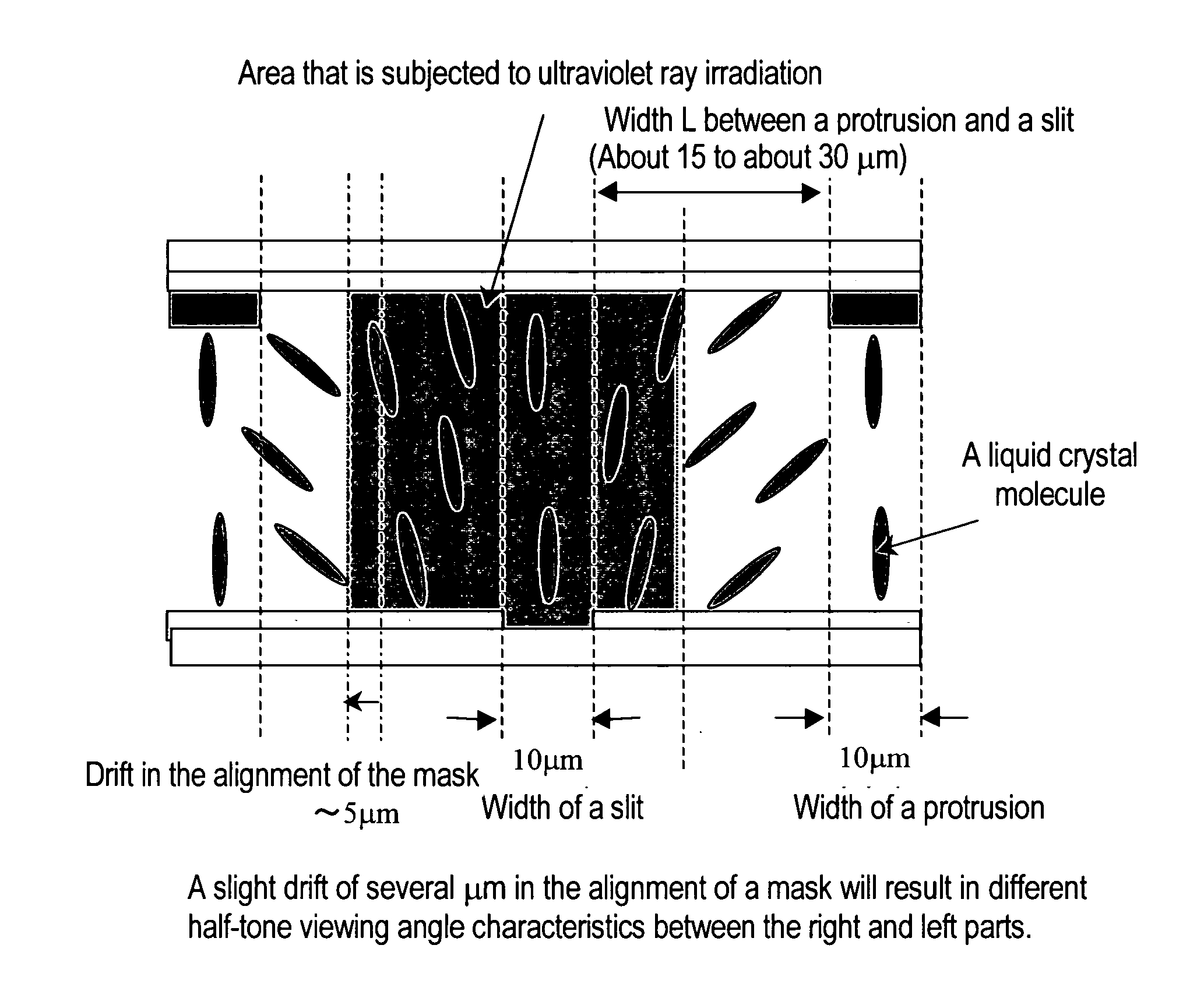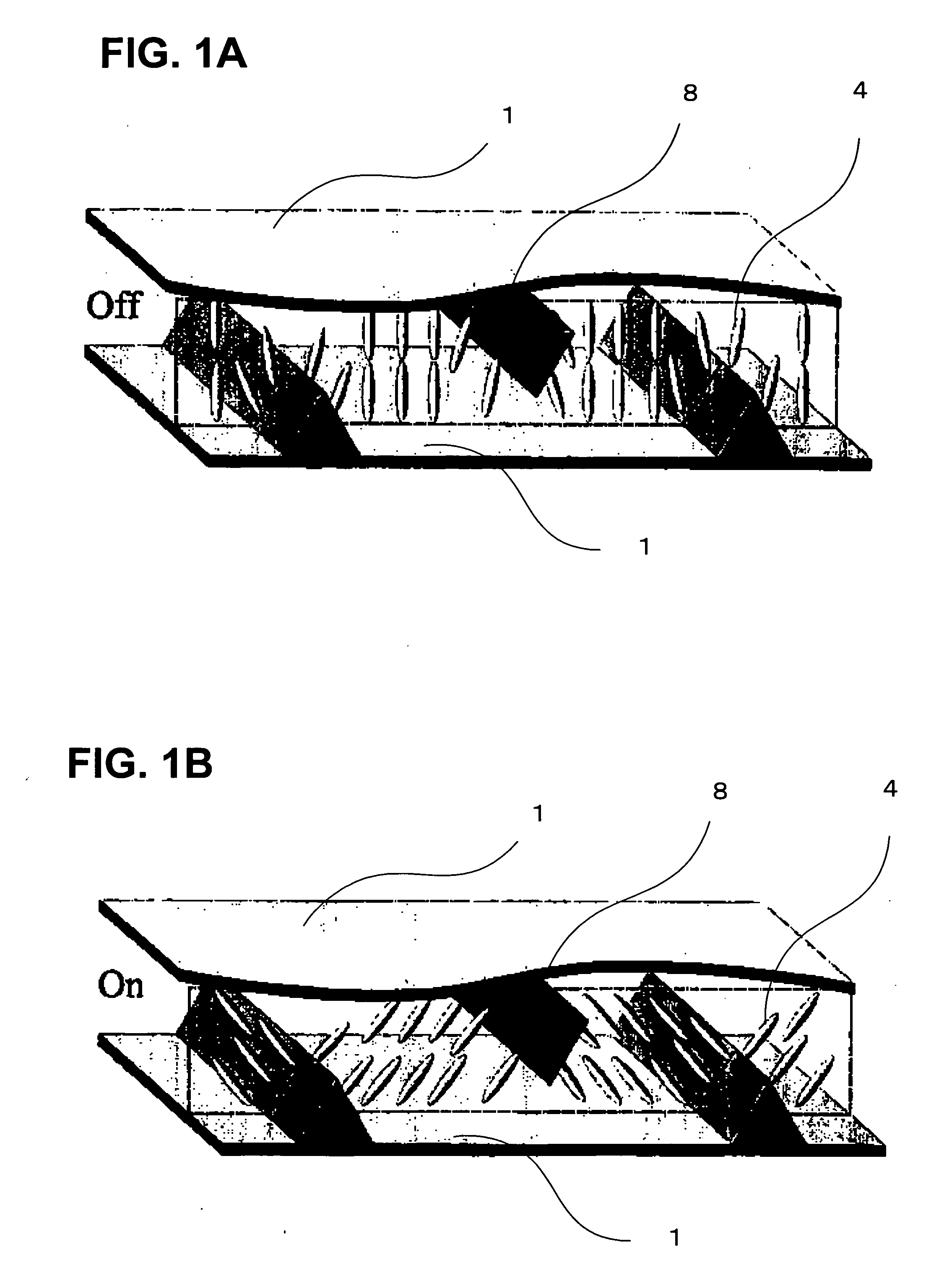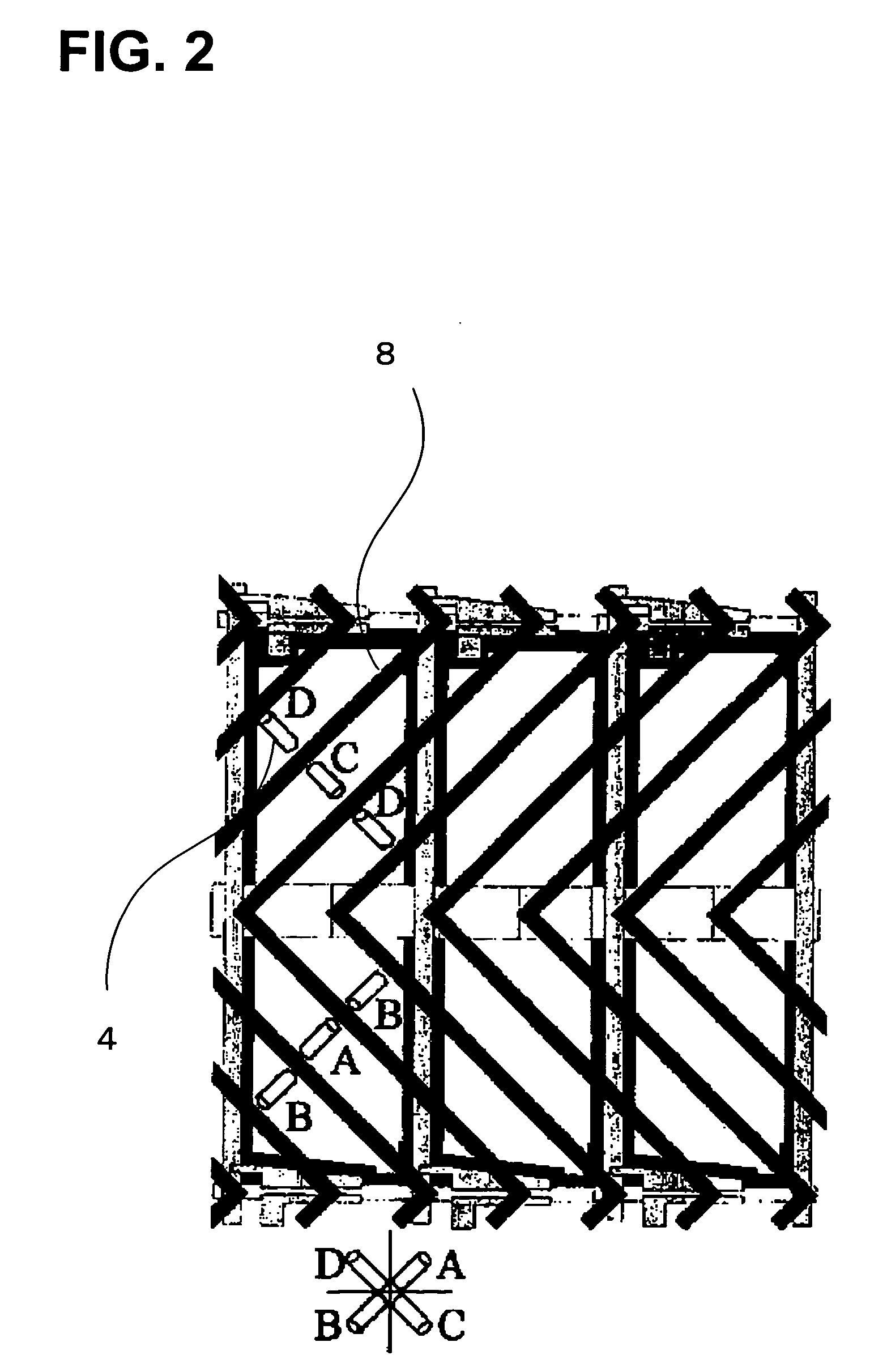Liquid crystal display device and manufacturing method therefor
- Summary
- Abstract
- Description
- Claims
- Application Information
AI Technical Summary
Benefits of technology
Problems solved by technology
Method used
Image
Examples
example 1
[0098] A bifunctional photopolymerizable compound having a ring structure was dissolved in an amount of 2.0 wt. % in a negative type liquid crystal having a refractive index anisotropy of 0.08, and a photoreaction initiator was added in an amount of 2.0 mol % based on the photopolymerizable compound to form a liquid crystal composition.
[0099] Two glass substrates with ITO (indium-tin oxides) formed as electrodes were used for the evaluation cell. Using a resist material, protrusions in a stripe form and having a height of 1.5 μm and a width of 10 μm were formed with a separation of 35 μm on each electrode.
[0100] Next, vertical alignment control films of a polyamic acid were formed by coating as the first alignment control layers according to the present invention, and the substrates were stuck to each other with a cell thickness of 4.25 μm so that the protrusions were made to be in parallel with each other and in an equidistantly spaced manner. Then the above-described liquid crys...
example 2
[0107] Ultraviolet rays were irradiated at 0.5 mW / cm2 for 10 J / cm2 over the whole surface of a cell prepared in EXAMPLE 1 including the domains which had not been irradiated with ultraviolet rays, and the change of threshold voltage was observed. As a result, the threshold voltage shifted about 0.15 V to the higher threshold voltage side in the domains where only the ultraviolet ray irradiation at 0.5 mW / cm2 had been carried out, while there was no large threshold voltage change observed in the domains where the ultraviolet ray irradiation at 5 mW / cm2 had been carried.
[0108] Next, a cell similar to one prepared in EXAMPLE 1 was subjected to annealing at 90° C. for 30 minutes, followed by ultraviolet ray irradiation at 0.5 mW / cm2 for 10 J / cm2 over the whole surface to observe the change of threshold voltage. As a result, the shifting in the threshold voltage was reduced to less than 0.05 V in the domains where only the ultraviolet ray irradiation at 0.5 mW / cm2 had been carried out. ...
example 3
[0109] A cell was formed according to the same conditions as for EXAMPLE 1 except that the added amount of the monomer was 1.8 wt. %.
[0110] Afterwards, additional ultraviolet ray irradiation (secondary irradiation) was carried out at 0.5 mW / cm2 for 10 J / cm2 over the whole surface including those that had not been irradiated, while a direct current was applied to the liquid crystal layer at 2.5V to observe the change of the threshold voltages. As a result, the threshold voltage could be further decreased at the domains that had been subjected only to the ultraviolet ray irradiation at 0.5 mW / cm2 (second irradiation), while no significant change in the threshold voltage value was observed at the domains that had been subjected to the ultraviolet ray irradiation at 5 mW / cm2 (primary irradiation), as shown in FIG. 11.
[0111] In more detail, it was possible to decrease the threshold voltage of the domains that had been subjected only to the secondary irradiation by 0.25 V, while maintai...
PUM
 Login to View More
Login to View More Abstract
Description
Claims
Application Information
 Login to View More
Login to View More - R&D
- Intellectual Property
- Life Sciences
- Materials
- Tech Scout
- Unparalleled Data Quality
- Higher Quality Content
- 60% Fewer Hallucinations
Browse by: Latest US Patents, China's latest patents, Technical Efficacy Thesaurus, Application Domain, Technology Topic, Popular Technical Reports.
© 2025 PatSnap. All rights reserved.Legal|Privacy policy|Modern Slavery Act Transparency Statement|Sitemap|About US| Contact US: help@patsnap.com



